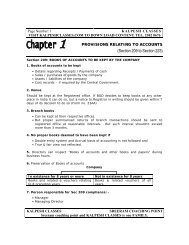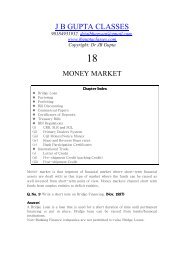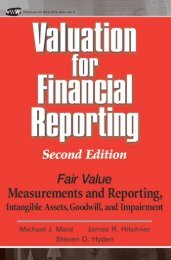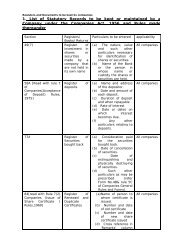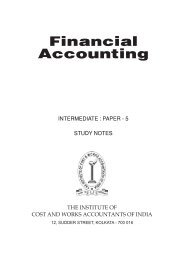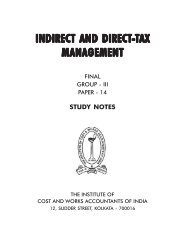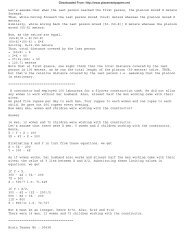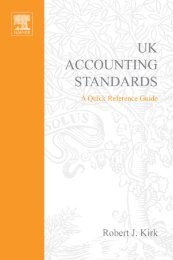Chapter 6 Chapter 6
Chapter 6 Chapter 6
Chapter 6 Chapter 6
You also want an ePaper? Increase the reach of your titles
YUMPU automatically turns print PDFs into web optimized ePapers that Google loves.
25<br />
= [(-1 )(Modified Duration)(Yield change in terms of percentage points)}<br />
+ [(C/200) (Yield Chg in terms of percentage points) 2 ]<br />
= [{(-1)( 7.3585)(1)} + {(79.35)/200)(1)}] = 6.96%<br />
New Price of Bond = 1000 – 69.60 = 930.40<br />
• Present value of cash flow method :<br />
New price of bond (YTM 7%) = 60(7.024) + 1000 x 0.508 = 929.44<br />
% Error by duration method = (926.42 – 929.44) / 929.44 = 0.325%<br />
% Error by convexity method = (930.40 – 929.44) / 929.44 = 0.103%<br />
Comment : The new price of bond ( calculated on the basis of changed YTM)<br />
is more accurate when calculated by convexity (rather than by duration)<br />
CONVERTIBLE BONDS<br />
These are the bonds which have / can to be converted into specified number of<br />
equity shares of the company issuing these bonds within a specified period. In<br />
India most of the convertible bonds have been issued on the basis of compulsory<br />
conversion i.e. the bonds are compulsorily convertible into number of specified<br />
number of shares, there is no discretion of the bond holder. In USA and European<br />
countries, convertible bonds are option convertible bonds i.e. conversion takes<br />
place if the bond holder so desire,<br />
An Example of option convertible bond: Suppose a company issues 7%<br />
convertible bonds of $100 each, maturity 7 years, redemption at par. The<br />
bondholder can get his bond converted into 4 equity shares after 2 years of<br />
issuance. Now whether the bond will be converted into equity shares or not, it is<br />
at the discretion of the bond holder. Suppose he gets the bonds converted into<br />
shares, the company’s liability towards principal and interest will extinguish. If<br />
he does not get the bond converted, he will be emitted to receive interest<br />
periodically and on maturity he will get the redemption amount of $100.<br />
The convertibility option lowers the interest rate that the issuer would otherwise<br />
have to pay without this feature, and it appeals to investors who want current<br />
income, but would like to take advantage of any growth in the issuer company.<br />
Let’s understand a few terms related to convertible debentures:<br />
(i) The number of shares that each bond can be converted to is known as the<br />
conversion ratio.<br />
(ii) Conversion price is the exercise price at which the investor converts his<br />
bond into equity shares. It is obtained by dividing the par value of the bond by<br />
the conversion ratio.



